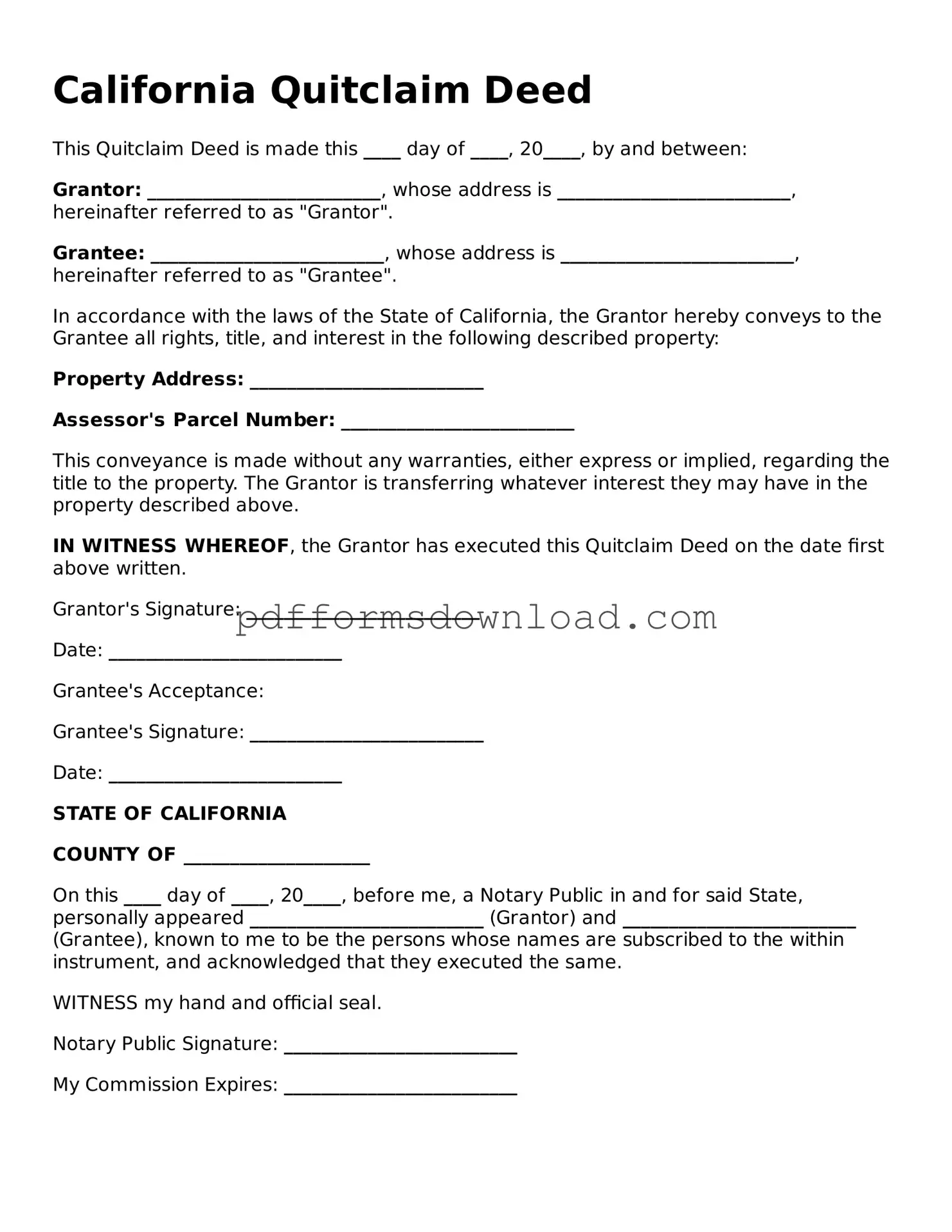What is a Quitclaim Deed in California?
A Quitclaim Deed is a legal document used to transfer ownership of real estate from one party to another. In California, this form allows the current owner, known as the grantor, to relinquish any claim they have to the property. Unlike other types of deeds, a Quitclaim Deed does not guarantee that the grantor holds clear title to the property. It simply conveys whatever interest the grantor may have at the time of the transfer.
When should I use a Quitclaim Deed?
This type of deed is commonly used in situations where property is transferred between family members, such as in divorce settlements or inheritance cases. It is also useful for clearing up title issues, where the grantor may not be certain of their ownership rights. However, it is important to note that a Quitclaim Deed does not provide any warranties or guarantees regarding the property’s title.
How do I complete a Quitclaim Deed in California?
To complete a Quitclaim Deed, you need to gather specific information, including the names of the grantor and grantee, the property description, and any applicable legal descriptions. The form must be signed by the grantor in front of a notary public. After signing, it should be filed with the county recorder’s office in the county where the property is located. Be sure to check for any local requirements that may apply.
Are there any fees associated with filing a Quitclaim Deed?
Yes, there are typically fees for filing a Quitclaim Deed with the county recorder’s office. These fees can vary by county, so it is advisable to check with the local office for the exact amount. Additionally, if the property transfer involves a change in ownership, there may be property tax implications to consider.
Do I need an attorney to prepare a Quitclaim Deed?
Can a Quitclaim Deed be revoked?
Once a Quitclaim Deed is executed and recorded, it generally cannot be revoked unilaterally. However, the parties involved can agree to rescind the deed through a new legal document, such as a Revocation of Quitclaim Deed. It’s important to consult with a legal professional if you are considering this option, as the process may vary based on individual circumstances.
